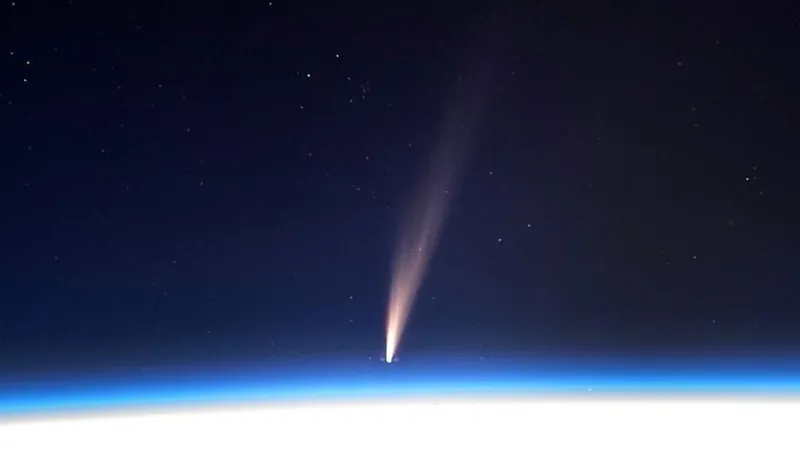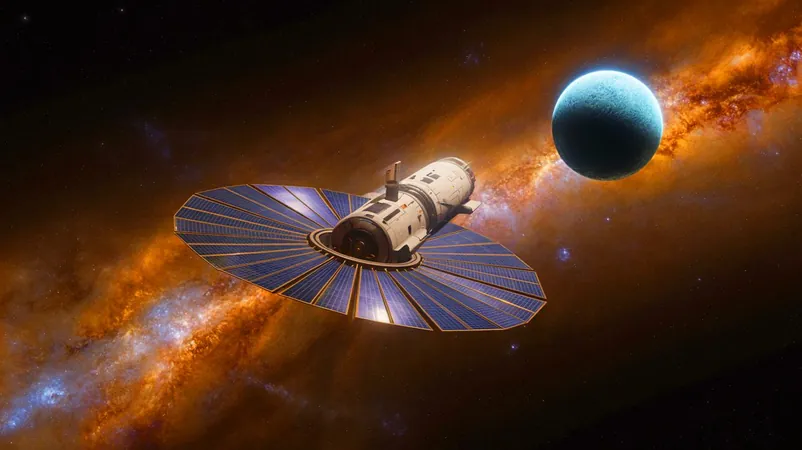
A Rare Celestial Visitor: Comet G3 Lights Up the Night Sky After 180,000 Years—Here’s How to Catch a Glimpse Tonight!
2025-01-16
Author: Chun
Prepare to witness an astronomical marvel! Comet C/2024 G3 (ATLAS), which hasn't graced our inner solar system for a staggering 180,000 years, has suddenly re-emerged. This mesmerizing comet is expected to be visible for a limited time, with the next appearance not anticipated for another 600,000 years.
Known as one of the potential brightest comets of the year 2025, comet G3 has already been showcased in spectacular fashion. NASA astronaut Don Pettit captured stunning images of the comet from the International Space Station, sharing his awe on social media. Alongside him, Russian cosmonaut Ivan Vagner also documented the comet, highlighting the excitement among space enthusiasts globally.
What You Need to Know About Comet C/2024 G3 (ATLAS)
This extraordinary comet is classified as a long-period comet due to its highly elongated orbit, likely originating from the Oort Cloud—a dense sphere filled with icy bodies surrounding our solar system. Remarkably, C/2024 G3 reached its closest point to the sun, known as perihelion, on January 13, 2025, passing within just 8.3 million miles (13.5 million kilometers) without disintegrating.
Comparatively, this distance is less than a third of the average distance from Mercury to the sun, but the comet managed to survive the intense heat and gravitational forces during its close encounter.
Visibility for Skywatchers
Currently, comet G3 can be found in the constellation Capricorn, at about 91 million miles (146 million kilometers) from Earth. According to experts, it recently transitioned into view in the evening sky on January 14 and will remain visible until around January 20. After that, visibility will shift, favoring skywatchers in the Southern Hemisphere, who will enjoy prime viewing conditions.
How to Catch a Glimpse of Comet G3
For those in the Northern Hemisphere eager to see the comet tonight, the conditions must be just right. You'll need a dark sky, away from light pollution, a clear low western horizon, and a good pair of binoculars. The best time to look is shortly after sunset. As noted by Bob King from Sky and Telescope, the farther south you are in the Northern Hemisphere, the brighter and more prominent the comet will be in your sky.
King himself used binoculars to pinpoint the comet, first locating the bright planet Venus, then moving his gaze slightly to discover the comet sparkling against the dark backdrop.
Tools to Help You Spot the Comet
Looking for a virtual guide? Stellarium Web provides an incredible online planetarium experience where you can find the exact location of comet G3 from your position. This tool gives you the most up-to-date information and visual guidance to ensure you don’t miss this once-in-a-lifetime sighting.
The Uncertain Future of Comet G3
While it was initially expected that comet G3 may shine as brightly as Venus, the comet's exact brightness in the coming days remains speculative. Experts suggest that its magnitude could fade significantly in a week, casting uncertainty on how it will perform following its near-pass to the sun. Nick James from the British Astronomical Association has indicated that predicting the comet's behavior post-encounter is difficult, adding an exhilarating element to the skywatching experience.
Don’t miss this rare opportunity to witness a celestial wonder! Prepare your binoculars, head outside, and wish upon a dazzling comet while you still can. Wishing everyone clear skies and enchanting views!





 Brasil (PT)
Brasil (PT)
 Canada (EN)
Canada (EN)
 Chile (ES)
Chile (ES)
 Česko (CS)
Česko (CS)
 대한민국 (KO)
대한민국 (KO)
 España (ES)
España (ES)
 France (FR)
France (FR)
 Hong Kong (EN)
Hong Kong (EN)
 Italia (IT)
Italia (IT)
 日本 (JA)
日本 (JA)
 Magyarország (HU)
Magyarország (HU)
 Norge (NO)
Norge (NO)
 Polska (PL)
Polska (PL)
 Schweiz (DE)
Schweiz (DE)
 Singapore (EN)
Singapore (EN)
 Sverige (SV)
Sverige (SV)
 Suomi (FI)
Suomi (FI)
 Türkiye (TR)
Türkiye (TR)
 الإمارات العربية المتحدة (AR)
الإمارات العربية المتحدة (AR)